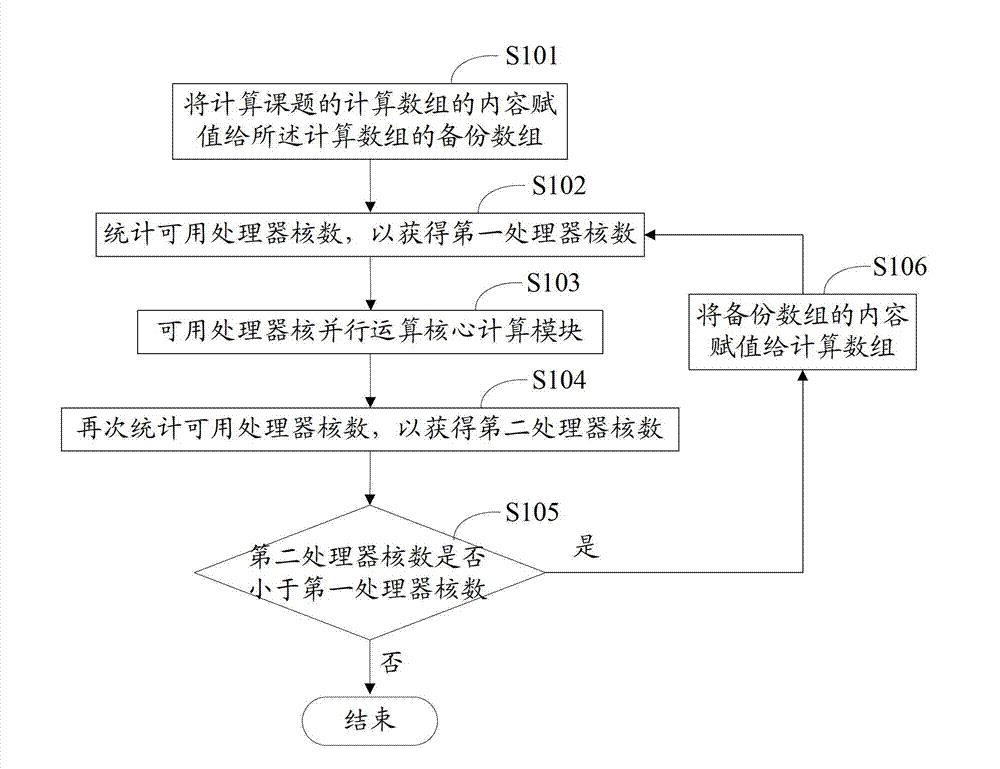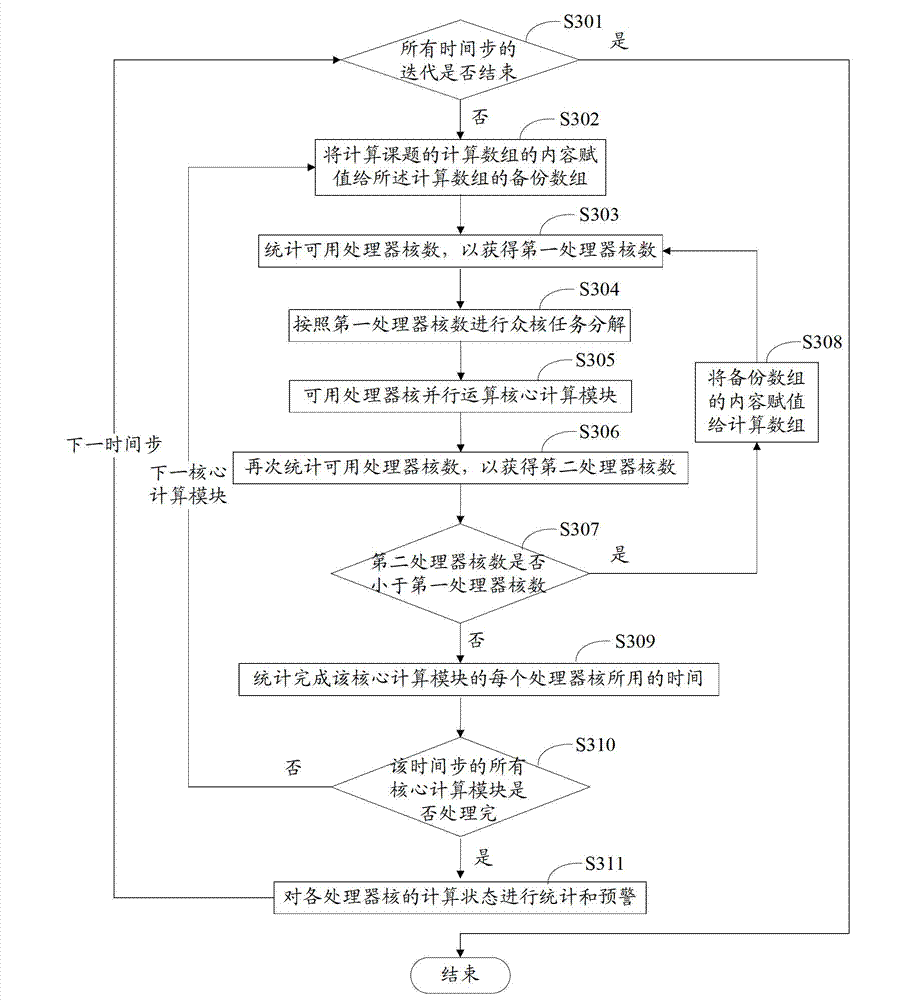Fault-tolerance method of large-scale heterogeneous parallel computing
A parallel computing, large-scale technology, applied in the computer field, can solve problems such as project suspension, failure to take into account the realization of many-core-level fault-tolerant functions, and inability to automatically detect hardware failures, so as to ensure reliability and stability and reduce failures. The effect of recovery time
- Summary
- Abstract
- Description
- Claims
- Application Information
AI Technical Summary
Problems solved by technology
Method used
Image
Examples
no. 1 Embodiment approach
[0038] figure 1 It is a schematic flowchart of the first embodiment of the fault-tolerant method for large-scale heterogeneous parallel computing of the present invention. refer to figure 1 , the first embodiment includes the following steps:
[0039] Step S101 is executed to assign the content of the calculation array of the calculation task to the backup array of the calculation array.
[0040] Step S102 is executed to count the number of available processor cores to obtain the first number of processor cores.
[0041] Executing step S103, the core calculation module can be operated in parallel by the processor core. It should be noted that in large-scale computing projects, the core computing module is usually a part of the core loop with a relatively concentrated amount of computation. The usual practice is to decompose the tasks of the core computing module and hand them over to each processor to complete in parallel. Therefore, the correctness of the core computing ...
no. 2 Embodiment approach
[0055] figure 2 It is a schematic flowchart of the second embodiment of the fault-tolerant method for large-scale heterogeneous parallel computing of the present invention. Different from the first specific embodiment, the second specific embodiment counts the time spent by each processor core participating in the core computing module after ensuring that the calculation of the core computing module is correct. Moreover, the second specific embodiment shows the execution process of multiple core computing modules in one time step. refer to figure 2 , the second specific embodiment includes the following steps:
[0056] Step S201 is executed to assign the content of the calculation array of the calculation task to the backup array of the calculation array.
[0057] Step S202 is executed to count the number of available processor cores to obtain the first number of processor cores.
[0058] Step S203 is executed, and the core calculation module can be operated in parallel ...
no. 3 Embodiment approach
[0084] image 3 It is a schematic flowchart of the third embodiment of the fault-tolerant method for large-scale heterogeneous parallel computing of the present invention. Different from the second specific embodiment, the third specific embodiment performs many-core task decomposition according to the first processor core number after counting the number of first processor cores, and shows the execution process of all time steps, and After the iterative calculation of each time step is completed, statistics and early warnings are made on the calculation status of each processor core. refer to image 3 , the third embodiment includes the following steps:
[0085] Step S301 is executed to determine whether the iterative calculation of all time steps has ended. If so, end.
[0086] Otherwise, continue to execute step S302, and assign the content of the calculation array of the calculation task to the backup array of the calculation array.
[0087] Step S303 is executed to c...
PUM
 Login to View More
Login to View More Abstract
Description
Claims
Application Information
 Login to View More
Login to View More - R&D
- Intellectual Property
- Life Sciences
- Materials
- Tech Scout
- Unparalleled Data Quality
- Higher Quality Content
- 60% Fewer Hallucinations
Browse by: Latest US Patents, China's latest patents, Technical Efficacy Thesaurus, Application Domain, Technology Topic, Popular Technical Reports.
© 2025 PatSnap. All rights reserved.Legal|Privacy policy|Modern Slavery Act Transparency Statement|Sitemap|About US| Contact US: help@patsnap.com



